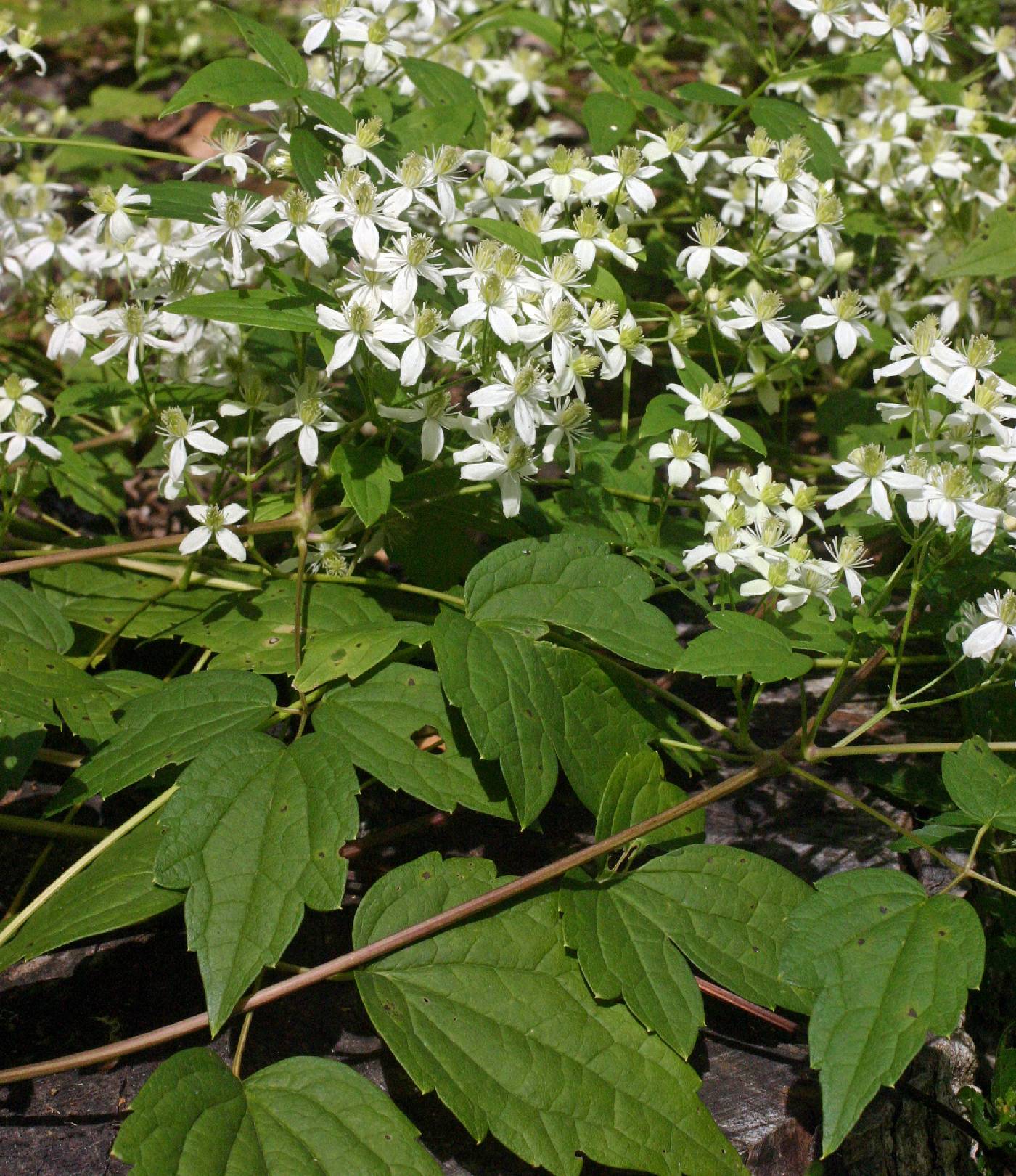|
|
|
|
Family: Ranunculaceae
devil's darning needles
[Clematis virginiana var. missouriensis (Rydb.) E.J.Palmer & Steyerm.] |
Stems climbing, 2-7 m. Leaf blade 3-foliolate; leaflets ovate to lanceolate, 3.5-9 × 1.5-7.5 cm, margins coarsely toothed to entire; surfaces abaxially sparsely to densely pilose, adaxially glabrate. Inflorescences axillary, 3-many-flowered simple or compound cymes. Flowers unisexual; pedicel slender, 1-2 cm; sepals wide-spreading, not recurved, white to cream, elliptic or nearly oblong to oblanceolate, 6-14 mm, abaxially densely white-hairy, adaxially sparsely white-hairy; stamens ca. 30-50+; filaments glabrous; staminodes absent or fewer than stamens; pistils 40-70; beak nearly equaling sepals. Achenes ovate , 2.5-3.5 × l.5 mm, conspicously rimmed, sparsely short-hairy; beak 2.5-5 cm. 2 n = 16. Flowering summer (Jun-Sep). Streamsides, wet roadsides, fencerows, and other moist, disturbed, wooded or open sites, locally abundant; 0-1500 m; Man., N.B., N.S., Ont., P.E.I., Que.; Ala., Ark., Conn., Del., Fla., Ga., Ill., Ind., Iowa, Kans., Ky., La., Maine, Md., Mass., Mich., Minn., Miss., Mo., Nebr., N.H., N.J., N.Y., N.C., N.Dak., Ohio, Okla., Pa., R.I., S.C., S.Dak., Tenn., Tex., Vt., Va., W.Va., Wis. Clematis virginiana is the most frequent and widespread virgin's-bower in eastern North America. It is easily distinguished from C. catesbyana by the presence of three ovate leaflets. Native Americans used infusions prepared from the roots of Clematis virginiana medicinally to treat kidney ailments, and mixed them with milkweed to heal backaches and venereal sores. Decoctions of stems were ingested to induce strange dreams. In addition, the plant was used as an ingredient in green corn medicine (D. E. Moerman 1986).
Stems climbing, 2-3(-5) m, the lower part persistent and becoming woody; lvs mostly trifoliolate (uppermost sometimes simple), the lfls 2-10 cm, ovate to subcordate, acuminate, usually coarsely mucronate-toothed, glabrous or sparsely (seldom more copiously) hairy beneath; mostly polygamo-dioecious; panicles many, on axillary peduncles mostly 2-6 cm; sep white, oval to oblong-spatulate, 10-15 mm, hairy at least on the back; achenes many in a subglobose head, 4 mm, pubescent, light to dark brown or greenish-brown; mature style flexuous, strongly plumose, 2-4 cm; 2n=16. Moist soil; N.S. and e. Que. to Man., s. to Ga. and La. July-Sept. Gleason, Henry A. & Cronquist, Arthur J. 1991. Manual of vascular plants of northeastern United States and adjacent Canada. lxxv + 910 pp. ©The New York Botanical Garden. All rights reserved. Used by permission. |
|
|
|


